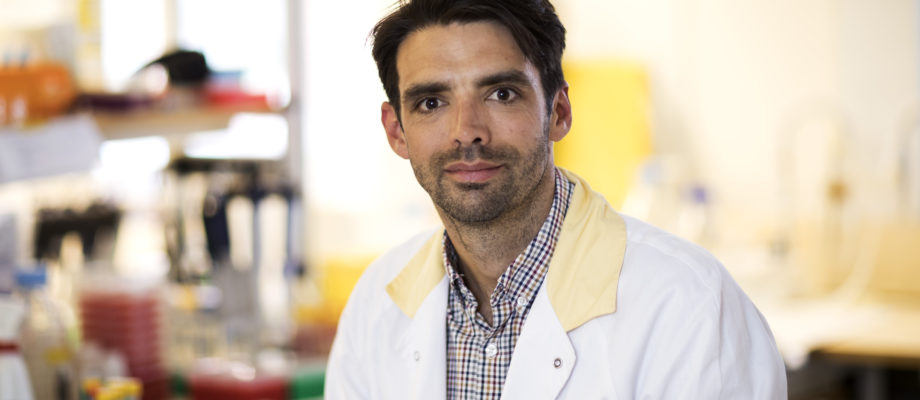YOUNG RESEARCHERS. Fredrik Sterky is home in Gothenburg again after postgraduate studies in Stockholm and a postdoc at Stanford. He is a resident physician in clinical chemistry, with a research interest in the connections among nerve cells in the brain. He has research time in the Wallenberg Centre for Molecular and Translational Medicine (WCMTM) and was recently one of the few young researchers in Gothenburg who received establishment support in the Swedish Research Council’s call for proposals last year.
Although he comes from Gothenburg, he was not educated here. After upper-secondary school, he studied one year at the University of Arizona, where an enthusiastic chemistry professor aroused his interest in research.
“I had the opportunity to try working in his lab and discovered the exciting world of molecular building blocks.”
When it was time to do his 21-month internship after completing medical training in Uppsala, he began asking himself if he should give research a try. A bit by chance, he came in contact with Nils-Göran Larsson at Karolinska Institutet and began working in his lab on a project about mitochondria and Parkinson’s disease.
“I thought it was really great to be in an environment where you do experiments without knowing what they will produce. You might not get any meaningful results, but you may also obtain results that change the way we think about disease processes” says Fredrik.
His dissertation showed that Parkinson’s disease may be related to impaired function of mitochondria in neurons, by primarily affecting the synapses. During his clinical internship in Stockholm, he began thinking about doing a postdoc. He thought it would be easiest to persuade the family to accompany him to California for a few years, so when he had time off from the medical center, he went to Stanford practically for just over one day to meet renowned biochemist Thomas Südhof.

A prolonged celebration
When Fredrik Sterky and his family moved to Stanford in 2013, it turned out to be an eventful year for his new home laboratory. Fredrik barely had time to begin work as a postdoc on the team when Thomas Südhof was presented with the Lasker Award. The festive atmosphere at the lab had hardly settled down when it was announced that the team leader would also receive the Nobel Prize in 2013.
“It’s a large and successful lab, of course, and it was incredibly exciting to be able to come to Stanford and work with him,” says Fredrik.
Thomas Südhof is well-known for his studies of how brain cells communicate, which also became Fredrik’s research area. During his years as a postdoc, he began to study the mechanisms of how various neurons connect with synapses, which he is continuing to work on in Gothenburg.

“Among other things, we are investigating a group of proteins called neurexins, which sit on the surface of the synapses. They bind to other proteins on the receptor cell as a kind of molecular handshake. How this works – for example, how a neuron knows what other neurons it is to interconnect with – is only partially understood.”
A complex interaction
Neurexins help to recruit other proteins to the synapse, which defines the synapse’s properties.
“These proteins have been thoroughly studied, in part because mutations in the gene that encodes for neurexin-1 increase the risk for autism and schizophrenia,” Fredrik says.
During his time in Thomas Südhof’s lab, he found two new proteins that bind to the neurexins. Fredrik is now investigating the role these proteins play in the complex interaction of various proteins that regulate how synapses are formed and help to define their function.

“To understand the brain and the diseases that afflict the brain, we must first understand its building blocks. Today the most important players are known, but there is still much that we don’t know about how they interact with each other to mediate the function of neurons function,” says Fredrik.
The two proteins he found are known as CA10 and CA11. In an article in PNAS (Proceedings of the National Academy of Sciences), he showed recently that these proteins may interact with neurexins in an unexpected way:
“The binding of CA10 increases the synaptic levels of neurexins, at least in some circumstances, but the role of these proteins and their interactions with neurexins in the brain is still unknown.”
You can read more about Fredrik Sterky’s research team here: http://wcmtm.gu.se/research-groups/sterky
TEXT: ELIN LINDSTRÖM CLAESSEN
PORTRAIT PHOTO OF FREDRIK STERKY: JOHAN WINGBORG











